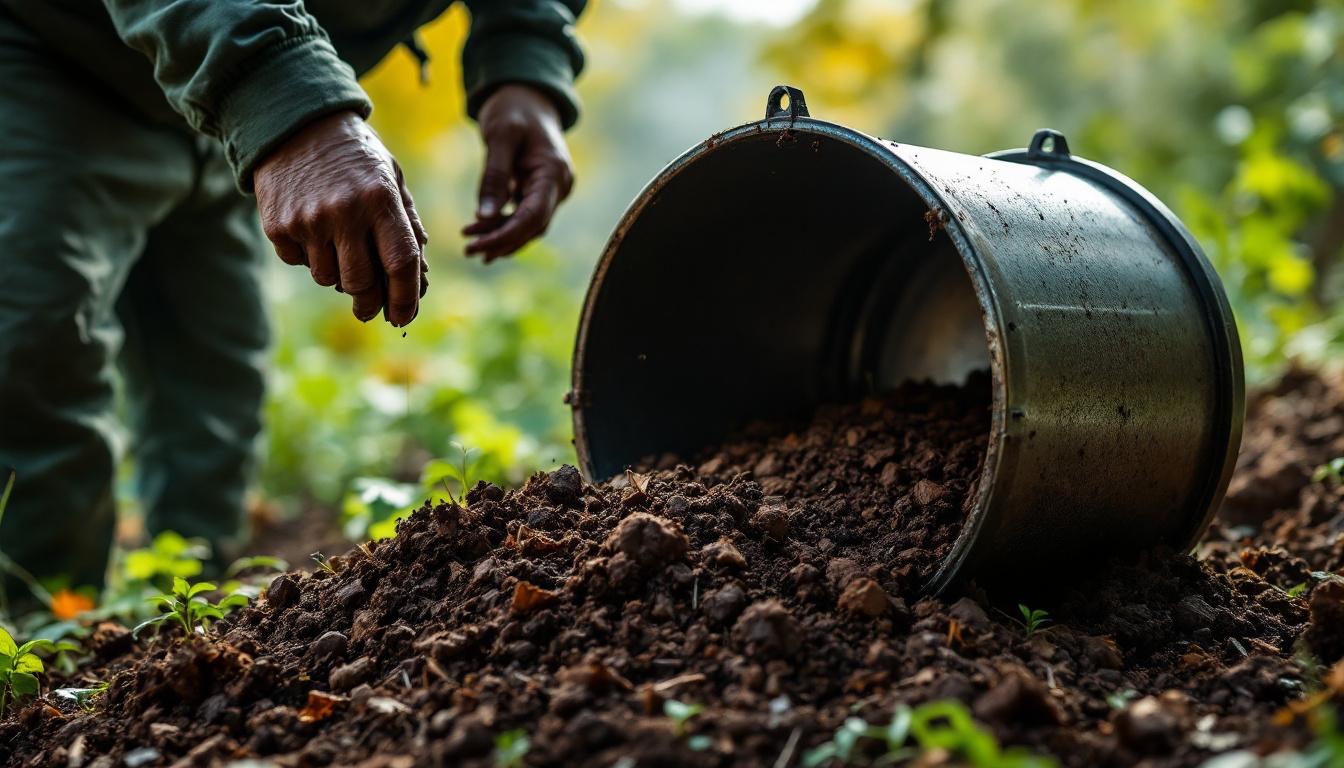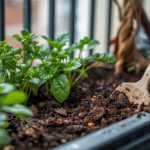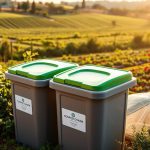Simple Tips for Faster Composting at Home
Fixing a Slow Compost Tumbler is simpler than you think. Learn quick tips to get your bin spinning smoothly and your compost back on track.
Making compost at home feels like turning kitchen scraps and garden waste into gold. Composting is simply the process of breaking down organic material like food, leaves, and paper into nutrient-rich compost.
This helps plants grow and keeps waste out of landfills, so it’s good for your garden and the planet.
But even the best compost tumbler can grind to a halt, leaving you with a stubborn pile instead of crumbly, earthy compost.
Fixing a slow compost tumbler usually comes down to a few simple tweaks—like balancing the greens and browns, checking moisture, or giving the bin a spin.
If you’re ready for faster, fresher compost, you’re in the right spot.
In this post, you’ll discover:
- Why composting matters for your home and for a sustainable lifestyle
- What causes a compost tumbler to slow down and how to get it moving again
- Easy steps anyone can follow (yes, even kids) to speed up the process
- Quick explanations for terms like compost, vermicomposting, greens, and browns
- Where to go for extra help, including science-backed tips and hands-on guides
Ready to turn your slow tumbler into a compost powerhouse? Let’s get started and make waste work for you!
What Is Composting and Why Do Compost Tumblers Get Slow?
Composting is one of the simplest and most rewarding ways to recycle at home.
With the right setup, you can turn kitchen scraps and yard waste into nutrient-rich compost, perfect for boosting your garden’s health.
But sometimes, even when you’re following all the steps, your compost tumbler seems to hit a wall. Instead of earthy magic, you get a sluggish heap that just won’t break down.
Let’s unravel why that happens and what to do about it.
 Photo by Dino
Photo by Dino
What Is Composting?
Composting is nature’s way of recycling your banana peels, coffee grounds, leaves, and even old newspapers into something valuable for your garden.
When you compost, you’re creating the ideal environment for microbes and worms (if you use vermicomposting) to do their work, breaking down organic matter into humus—a dark, crumbly material plants love.
It’s like a buffet for your garden soil!
This process is important not only because it cuts down on what goes into landfills, but also because it makes your plants stronger and your soil richer.
As outlined in resources like Composting 101, healthy composting can transform waste into a garden superpower.
Key Composting Methods:
- Compost tumblers: Enclosed bins rotated to mix and aerate materials.
- Vermicomposting: Using worms to process food scraps.
- Traditional bins or piles: Open-air setups, often larger and slower.
If you’re new to composting, check out this guide on starting composting at home for easy steps and practical advice.
Why Do Compost Tumblers Get Slow?
At first, a compost tumbler can seem like it’s working magic—food and garden scraps start to break down fast, and you imagine fresh compost in no time.
But things don’t always stay speedy.
There are several reasons why a compost tumbler might get slow:
- Imbalanced Ingredients: Compost needs a good mix of “greens” (like veggie scraps and coffee grounds) and “browns” (like dry leaves and paper). Too much of either can stall the process.
- Lack of Moisture or Air: Microbes need water and air to thrive. If your tumbler is too dry, soggy, or packed tight, decomposition slows down.
- Not Enough Turning: Tumblers are designed to be spun every few days. If you forget to turn it, the compost can get compacted and slow down.
- Large Pieces: Big chunks of material take a lot longer to break down. The smaller you chop your scraps, the faster they’ll compost.
- Cool Temperatures: Heat helps microbes do their job. Composting slows way down when it’s cold.
If you want your tumbler to speed up, focus on these basics first. For more hands-on tips about keeping your compost active all year, visit our composting calendar tips.
Key Takeaways
- Composting turns organic waste into a powerful soil booster.
- Vermicomposting adds worms to speed up the breakdown of food scraps.
- Compost tumblers can get slow from poor mixing, not enough air or water, imbalanced ingredients, or large material size.
- Regular turning and the right ingredient mix are your best tools for fixing a slow compost tumbler.
- There’s always room to learn more—explore resources like Composting | US EPA and practical troubleshooting from fellow composters on Reddit’s slow tumbler discussions.
Every compost pile has a “personality.” With a few tweaks, you can get your tumbler back on track and enjoy the rewards of faster, healthier compost.
Quick Fixes: Getting Your Compost Tumbler Back on Track
When your compost tumbler slows down, it feels a bit like waiting for paint to dry—frustrating, and it leaves you wondering what went wrong.
The good news? You don’t need fancy tools or deep science to solve most compost problems. A few small changes, like adjusting your mix, tweaking moisture, and checking temperature, can get things moving again.
Below, we break down the quick fixes that will get your composting efforts back on the fast track.
Balancing Greens and Browns: The Secret Ratio
The real engine behind fixing a slow compost tumbler is the mix of greens and browns you toss inside.
Think of “greens” as anything fresh and moist—like fruit peels, veggie scraps, and even coffee grounds. “Browns” are dry things, such as leaves, twigs, shredded paper, and cardboard. You need both for happy composting.
What’s the right ratio? Aim for about 1 part greens to 2-3 parts browns by volume. You don’t need a measuring cup—just eyeball it.
Too many greens, and your compost will get mushy and smelly. Too many browns, and it becomes dry and slow to break down.
Here’s how to spot problems:
- Soggy, stinky, or slimy tumbler? Probably too many greens. Add dry browns like leaves or paper.
- Dry, crumbly pile that never heats up? Not enough greens. Toss in more veggie scraps or coffee grounds.
- Not sure? If it smells like fresh earth, you’re on the right track.
If you find your tumbler a bit stuck, a quick read on free compost browns and fixing slow, slimy compost bins offers even more signs to watch for and easy fixes.
Boosting Aeration and Moisture for Fast Composting
Your compost tumbler needs the right amount of air and water to break down quickly.
Imagine mixing cake batter: too dry and it won’t come together, too wet and it turns to goo. Compost likes a balance, too.
Moisture test: Grab a handful of composting material and squeeze. It should feel like a wrung-out sponge—damp but not dripping.
- Too Dry? Sprinkle with water while giving it a few turns.
- Too Wet? Add extra browns (dry leaves, shredded cardboard) and spin the tumbler with the lid open for a bit.
Air matters, too! Tumblers are made to get air inside, but packed bins or rarely turned material will suffocate your microbes.
Give the tumbler a good spin every few days, breaking up clumps if needed. If you notice a strong, unpleasant smell, it’s probably not getting enough oxygen.
For step-by-step seasonal tips on giving your bin the perfect balance, check out these composting calendar tricks for a thriving bin.
 Photo by Kaboompics.com
Photo by Kaboompics.com
Monitoring Temperature: Is It Hot Enough?
Temperature is like the compost speedometer. A hot compost tumbler works faster and makes cleaner compost.
Checking temperature is easy with a compost thermometer (just like a soil or meat thermometer).
Stick it in the center—healthy compost runs between 50°C and 65°C (120–150°F).
- Cool pile (below 45°C/115°F): Mix in more greens or give it a turn.
- Steaming hot? Nice job, but make sure it doesn’t get too dry.
Not sure what your thermometer is telling you? Take a peek at Understanding Compost Thermometer Readings for friendly advice on what those numbers mean.
Extra Tip: If you don’t have a thermometer, just reach in carefully—warm compost is a great sign that things are cooking as they should.
Cool, damp, and inactive? It’s time to tweak your greens, browns, or air.
Key Takeaways for Fast Results:
- Get your greens and browns balanced for healthy compost.
- Keep everything as damp as a wrung-out sponge.
- Turn your tumbler often to let air in.
- Watch the temperature—warm is good, soggy and cold usually means slow.
For more hands-on ways to start composting and troubleshoot every hiccup, try the composting tips for home beginners. Small fixes can make a huge difference in getting your compost tumbler back in action.
If you want even more ideas to add pep to your pile, don’t miss these 16 easy ways to speed up compost. You’ll find new tricks and time-savers even seasoned composters love.
Long-Term Habits for Healthy, Happy Composting
Building better compost doesn’t stop after you fix a slow compost tumbler. True success with composting comes from simple, long-term habits you can practice week after week.
Whether you’re new or just want smoother sailing, focusing on what goes in your tumbler and a few troubleshooting tricks keeps the system thriving.
Smart habits lead to less mess, fewer smells, and compost that plants will love.
Smart Additions: What to (and Not to) Compost
Knowing what your compost tumbler likes is half the battle. Each time you open the lid, think of it as feeding a pet—giving it what it needs helps it grow healthy and strong.
Some items will make your compost cook along, while others can cause problems or attract pests.
Compostable Items (Put These In):
- Fruit and veggie peels, cores, and scraps
- Coffee grounds and paper filters
- Crushed eggshells (they add calcium)
- Tea bags (make sure there’s no plastic)
- Yard trimmings and leaves (shredded if possible)
- Shredded cardboard and paper towels
- Small amounts of grass clippings
Things to Skip (Do Not Compost):
- Meat, bones, and fish (these can attract animals)
- Dairy products (smelly and slow to break down)
- Oily or greasy foods
- Glossy or colored paper
- Pet waste (from dogs or cats)
- Large sticks or thick branches
Pro Tips for Better Composting:
- Chop food waste and yard scraps into smaller pieces for faster compost.
- Blend “greens” and “browns” in your bin for a healthy mix.
- Try new methods, like adding a handful of worms for vermicomposting. This introduces red wigglers that eat scraps and create rich castings, speeding up the composting cycle.
- Don’t toss garden trimmings or cardboard—reuse them as compost “browns.” The Don’t Toss It Campaign has more ideas to help you recycle creatively.
- Always avoid anything non-organic or synthetic. Plastics and treated wood belong in landfill, not your tumbler.
Keeping the balance between green (wet) and brown (dry) items is key to fixing a slow compost tumbler and staying on track over time.
For an in-depth guide, see this Composting At Home resource from the US EPA, which also has charts and helpful graphics.
Troubleshooting Common Compost Tumbler Problems
Every compost tumbler runs into a hiccup now and then. Don’t worry—solving issues with smells, pests, or soggy bins is easier than it sounds.
Think of your compost as a little science project that needs attention, but rewards you with rich, earthy compost for your effort.
How to Fix Common Problems:
- Smelly Compost: Too many “greens” or too much moisture can cause bad odors.
- What to do: Add more dry “browns” like leaves, cardboard, or paper and give the tumbler a few extra spins.
- Bugs, Flies, or Pests: Fruit flies love uncovered food scraps.
- What to do: Always cover fresh scraps with a layer of browns. Keep the tumbler shut tight. Rinse out any sticky residue now and then.
- Soggy, Slimy Bin: This usually means too much water or not enough air.
- What to do: Mix in browns to soak up moisture. Open vents if your tumbler has them or leave the lid cracked for a few hours on a dry day.
- Compost Isn’t Breaking Down: Maybe the pile is too dry, or the pieces are too big.
- What to do: Sprinkle with water if the bin is dusty, or chop up new additions before tossing them in. Rotate the tumbler to help things move along.
If you’re still stuck or have a tricky build-up after following these steps, the Compost Troubleshooting Tips from Gardeners.com break down more solutions, from temperature checks to pest control.
 Photo by Daniel Camargo
Photo by Daniel Camargo
Patience and Perseverance Matter: Composting isn’t instant. Even with a tumbler, results can take several weeks or months, especially in cooler seasons.
Check on your bin every few days and stick to your routine. Little habits, like regular turning, watching the moisture, and mixing the right ingredients, will pay off.
If you want even more ways to set yourself up for composting success, check out the 6 Effective Composting Methods.
Mixing in new ideas, like worm bins or bokashi, can speed up your learning and results.
Key Takeaways:
- Feed your compost tumbler the right scraps—think greens and browns, and skip meat and dairy.
- Try new methods like vermicomposting to ramp up the breakdown of food scraps.
- Tackle smells, pests, or soggy messes with simple fixes.
- Be patient—a healthy compost pile always rewards you in the end!
Conclusion
Fixing a slow compost tumbler usually comes down to adjusting the basics. Airflow, moisture, balanced greens and browns, and regular mixing make all the difference in composting speed and quality.
Small changes like chopping materials finer or spinning the tumbler more often can quickly get your compost back on track.
Most problems have a simple fix—keep things airy, a little damp, and watch your ingredient mix.
Quick takeaways:
- Balance “greens” (food scraps, grass) with “browns” (leaves, cardboard).
- Keep piles moist but not too soggy.
- Turn your compost tumbler often to boost oxygen.
- Chop materials into smaller pieces for faster results.
- Try adding worms for vermicomposting if you want a real speed boost.
Want to level up your composting game? Explore the 6 Effective Composting Methods for new ideas.
If you need a nudge or have a specific composting puzzle, the friendly Ask A Question bot is ready to help with instant tips.
Your compost success starts with a few tweaks and a little patience—happy composting!
Compost Tumbler FAQs: Your Troubleshooting Questions Answered
Dealing with a slow or stubborn compost tumbler can feel like a puzzle with missing pieces—especially when you’re eager to see rich compost and not just a cold, lumpy pile.
This FAQ tackles common troubleshooting questions about composting, vermicomposting, and getting your tumbler working at its best.
Whether you’re new to composting or just want a refresher, you’ll find simple answers and practical tips right here.
 Photo by Julia M Cameron
Photo by Julia M Cameron
Why Is My Compost Tumbler Taking So Long?
When compost breaks down slowly, it usually means the conditions aren’t quite right for the tiny helpers—microbes and worms—to work quickly.
Here are the most common causes for a slow-moving tumbler:
- Too little moisture or too much water.
- Poor air flow or compacted ingredients.
- Imbalance of “greens” (wet, high-nitrogen) and “browns” (dry, high-carbon).
- Large, unchopped pieces of food or yard waste.
- Cold weather (microbes are less active when chilly).
Start by checking moisture (aim for a damp, wrung-out sponge feel) and making sure you rotate your compost tumbler often.
If it’s packed tight or smells bad, loosen it up and add more browns for balance. For extra troubleshooting insight, Reddit users share real-life slow tumbler solutions.
How Can I Fix a Wet or Soggy Compost Tumbler?
A soggy tumbler is a slow tumbler. When compost turns to mush, the airflow drops and helpful microbes can’t do their job.
To fix this:
- Add more dry browns like shredded cardboard or leaves.
- Turn the tumbler more often to boost aeration.
- Leave the lid off for a short time (if weather allows) for extra drying power.
- Check for blocked air vents and clear them out.
Drying things out helps microbes bounce back and gets your compost active again. If stuck, GrowVeg explains steps to balance wet compost and common mistakes.
What Should I Do If My Tumbler Smells Bad?
Strong odors from a compost tumbler are usually a sign of too many greens, too much water, or not enough oxygen.
Quick ways to freshen up your bin include:
- Mixing in a generous scoop of dry, carbon-rich browns (leaves, shredded paper).
- Giving the tumbler several spins to increase airflow.
- Checking that you’re not composting no-no items like meat, dairy, or greasy foods.
Smelly bins are common, and with a little tweaking, odors disappear in a few days.
Can I Use Vermicomposting in a Tumbler?
Vermicomposting relies on worms, usually red wigglers, to break down food scraps fast and enrich the compost with worm castings.
Most classic compost tumblers are not ideal for worms, because constant tumbling and changes in temperature or moisture can stress the worms. However, some tumblers designed for vermicomposting make it possible to combine the two.
If you’re set on adding worms, make sure your tumbler stays damp, has great drainage, and you avoid spinning when the worms are active.
For safe setups, check out the EPA’s home vermicomposting guidance.
For those wanting to learn more about different composting styles (including using worms), there are practical guides like six ways to compost at home that show all your options.
Is Layering Materials Important in a Compost Tumbler?
Layering helps at first, but once the compost tumbler spins, the real magic happens as everything mixes together.
The most important thing is making sure you always add a blend of greens and browns.
If a new batch seems slow to heat up, add more greens for energy or extra browns for better airflow and structure.
How Often Should I Turn My Compost Tumbler?
Turn your compost tumbler 2-3 times a week for best results. More frequent spinning means better mixing, more air for microbes, and quicker compost.
Turning also stops wet patches and clumps from forming, which slows everything down.
If your compost is slow, try spinning daily for a week and watch for improvements.
What’s the Best Size for Scraps in a Tumbler?
Smaller is faster when it comes to composting. Chop food scraps, break yard trimmings, and shred cardboard or paper before adding them to your bin.
The smaller the pieces, the easier it is for microbes—and worms, if you’re vermicomposting—to gobble them up.
This is a simple trick that pays off with quicker, finer compost.
How Can I Compost in Winter Without Slowing Down?
Cool weather slows down even the best compost bin. Tumbler walls offer some insulation, but for true speed in cold seasons:
- Store your tumbler in a sunny spot.
- Add more greens to feed heat-loving microbes.
- Turn less often to hold in heat, but still check for airflow.
- Add hot water bottles or extra insulation if you’re really dedicated.
For year-round tips tailored to your setup, visit the composting calendar for seasonal tricks.
Are There Any Materials I Should Never Put in a Tumbler?
Some things harm your compost or attract pests, including:
- Meat, bones, and fish scraps
- Dairy products
- Oils and fats
- Plastics, treated wood, and glossy paper
- Pet waste
Stick with fruit and veggie scraps, coffee grounds, eggshells, dry leaves, yard trimmings, and cardboard for the safest, quickest compost.
Key Takeaways for Troubleshooting a Slow Compost Tumbler:
- Most slowdowns are caused by too much moisture, not enough air, or poor ingredient mix.
- Turn your tumbler regularly, keep materials moist but not soggy, and add plenty of browns for balance.
- Chop up scraps for faster results and avoid composting meat, dairy, or oils.
- If you want more advice or a quick solution, the Composting FAQ bot at Compost Charm is a great place to get instant answers.
- For more troubleshooting and creative composting ideas, visit this useful composting tips for tumblers guide.
With these tips in your toolkit, fixing a slow compost tumbler feels less daunting and a lot more like gardening fun.





